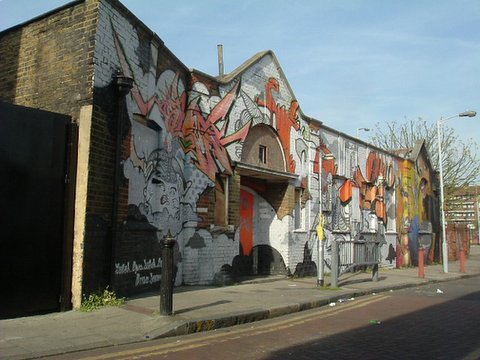Deptford is all around you

This is the approach down Hales Street I would have originally taken when walking a new route from Deptford High Street towards Deptford Church Street to catch a 47 bus (opposite Wavelengths Leisure centre). At that time the building was not covered in 'permission based graffiti', but was still orangey red brick. I remember thinking, what is this place, an old wash house ? When I read the plaque which said Ragged School, I immediately thought about Jerwood Space in Union Street SE1, a Victorian school converted to a very successful mixed arts facility opened in 1998. Its something which has inspired my investigations into urban regeneration working with heritage, not against it. Naturally I imagined the Ragged School to have similar potential for Deptford. I didnt then know anything about the building until I returned another day when the door was open and to my amazement there was a gallery showing. The place was alive with artists and visitors coming and going and reminded me more of the atmosphere of The Foundry at Great Eastern Street EC2. Just as I was getting excited about a vibrant new creative zone, I learned that the fate of the building was uncertain. Within that I realised that so many minor historical buildings around Britain are being used as 'regeneration firewood'. I am using this blog to make associations with groups and individuals to explore how digital technologies are letting citizens reclaim 'regeneration' from the glossy brochures and sales rhetoric, and back into the hands of local people. Creativity is more important than funding, grants, investment etc, as money will always go towards a vision that works, but just a shiny new building will not neccessarily attract visionary activity.




